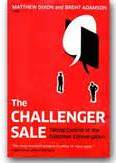Perspective on the Challenger Sale and Your Sales Process
The Challenger Sale has been a huge trend in the sales training industry in recent years, and one that has garnered its share of conversation and controversy. Co-authors Matthew Dixon and Brent Adamson proclaim their ideas to be “the biggest shock to sales wisdom in decades.” However, much of their work is far from new.
Their key insight is that in order to sell successfully, salespeople must teach their customers something new about their business, providing them with unique ideas that improve the bottom line. Unfortunately, this approach is not new. It originated with Xerox nearly 40 years ago, and was again explored in a recent Harvard Business Review article by the Chasm Group suggesting sales people should start buying cycles with leading edge information that can give them an industry advantage.
Putting aside the fact that the Challenger approach is not new, how sound is this concept of insight-led selling? One thing to consider is that only a small percentage of buyers are Early Adopters, as John Holland wrote in his October 2013 article on “Aligning with 80% of Your Market”. To take an aggressive position with the mainstream or laggard buyers, and/or tell them what the focus should be on in improving their business will alienate many of them quickly. These types of buyers want to be nurtured and led to a decision that minimizes the risk for themselves and their organization.
Even more potentially dangerous is their recommendation that salespeople should be “assertive, pushing back when necessary and taking control of the sale.” From our experience, this is very bad advice, as buyers become distrustful of anything that reeks of a “hard sale” (for more on this, see our previous post on giving customers the OK to say “N0”). We work with sales organizations to enable them to use the way that they sell as a key capability, and telling is not part of that persona.
How else are we different? We teach proven techniques to help salespeople establish trust and uncover key customer pain points. Rather than telling your prospects what they should be doing, we encourage our clients to use illustrative stories and/or directed questioning to help customers tell you where their pain lies and how you can help them.
In addition to teaching selling techniques, we work with companies to develop a buyer-centric, end-to-end sales process and management reinforcement plan to ensure lasting revenue generation.




